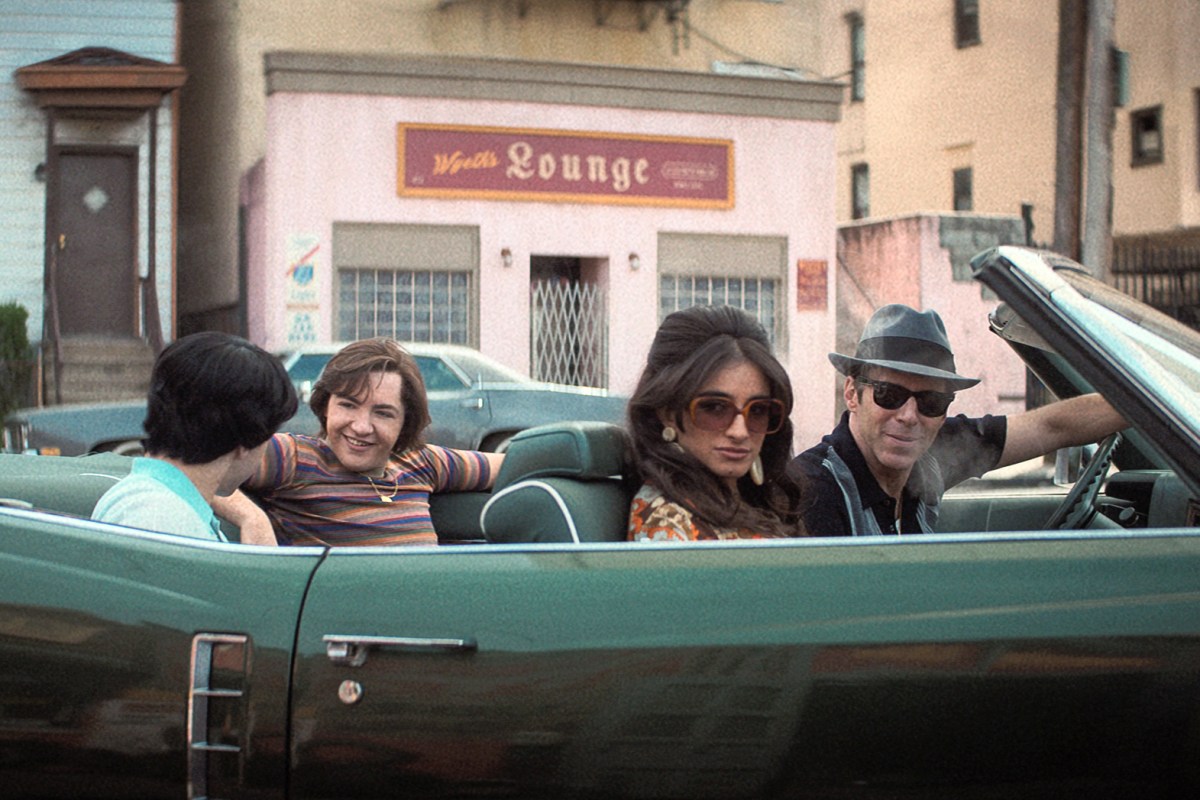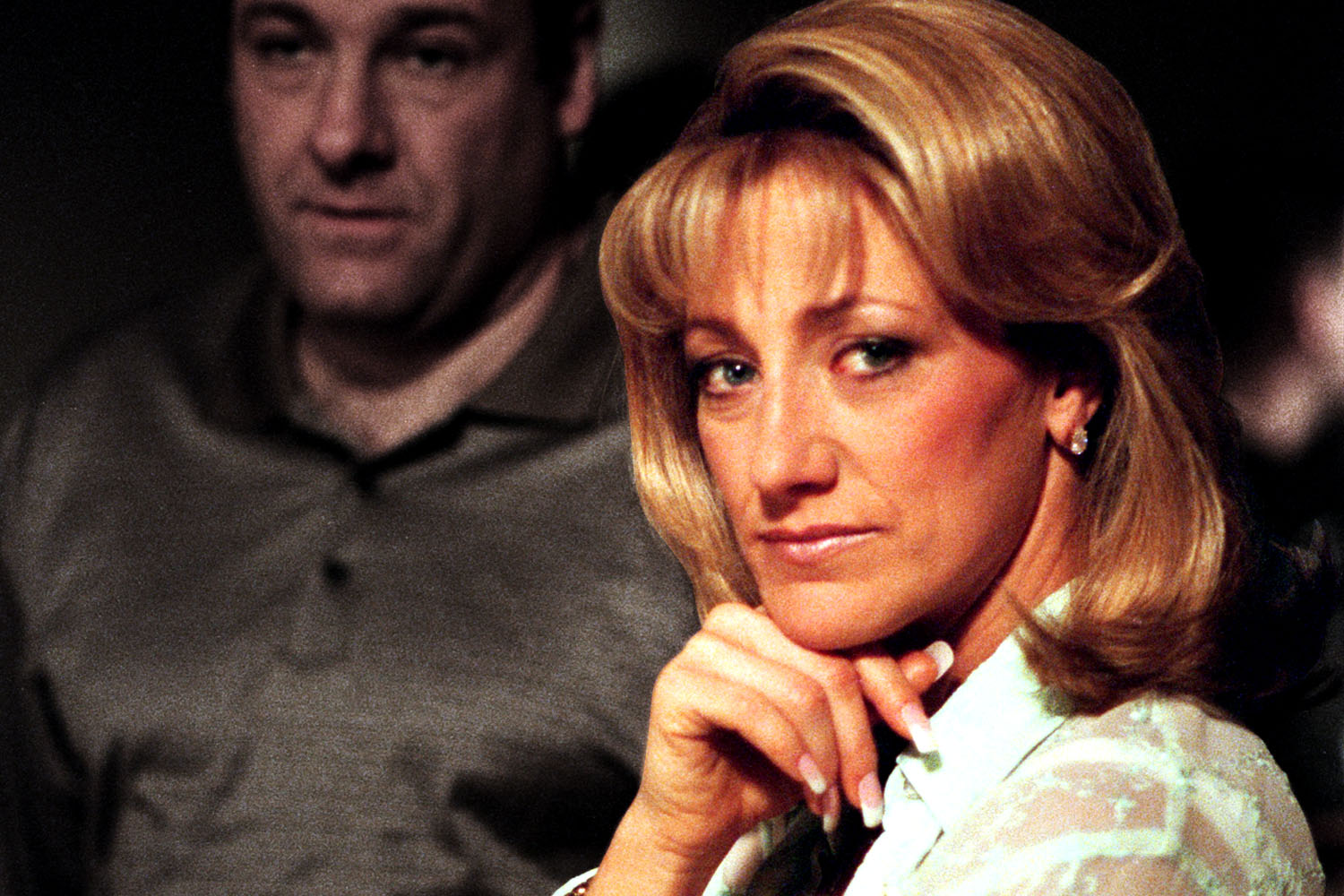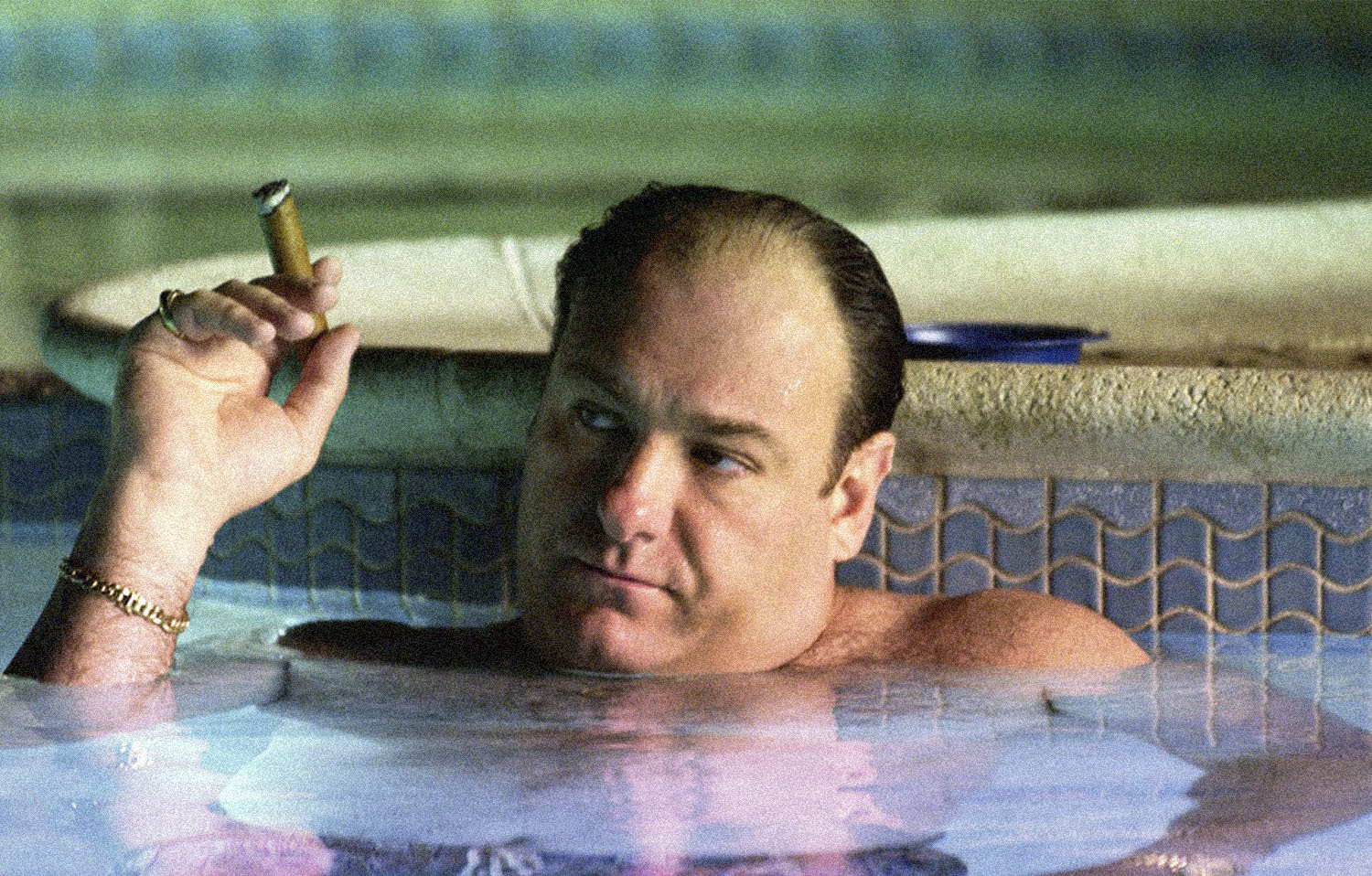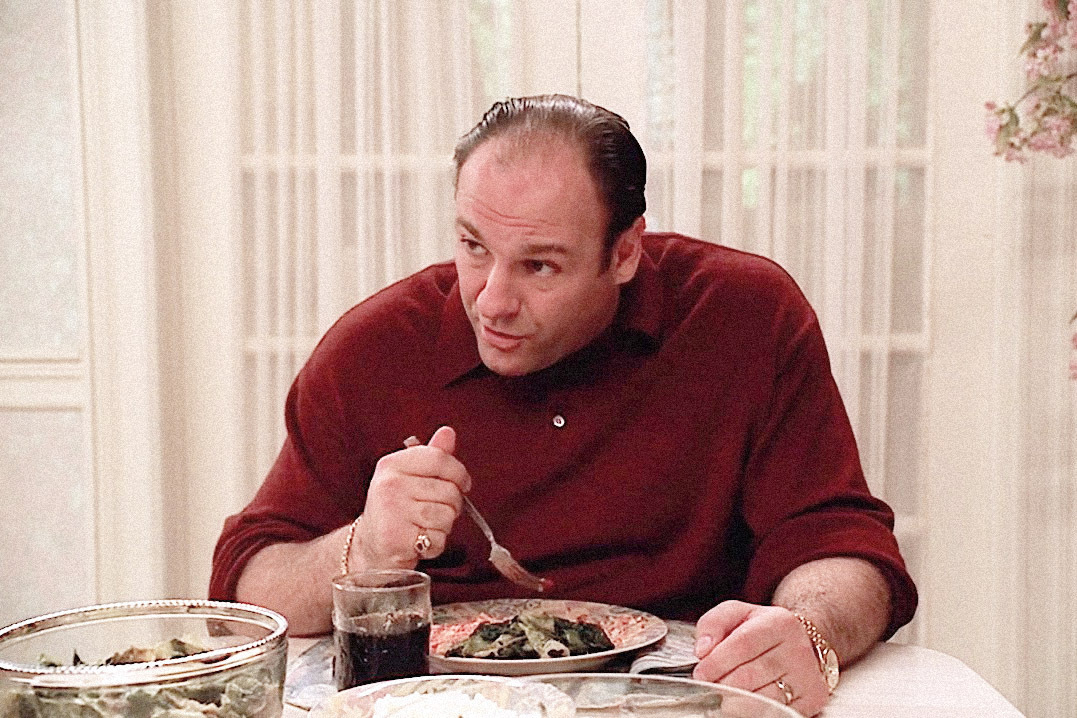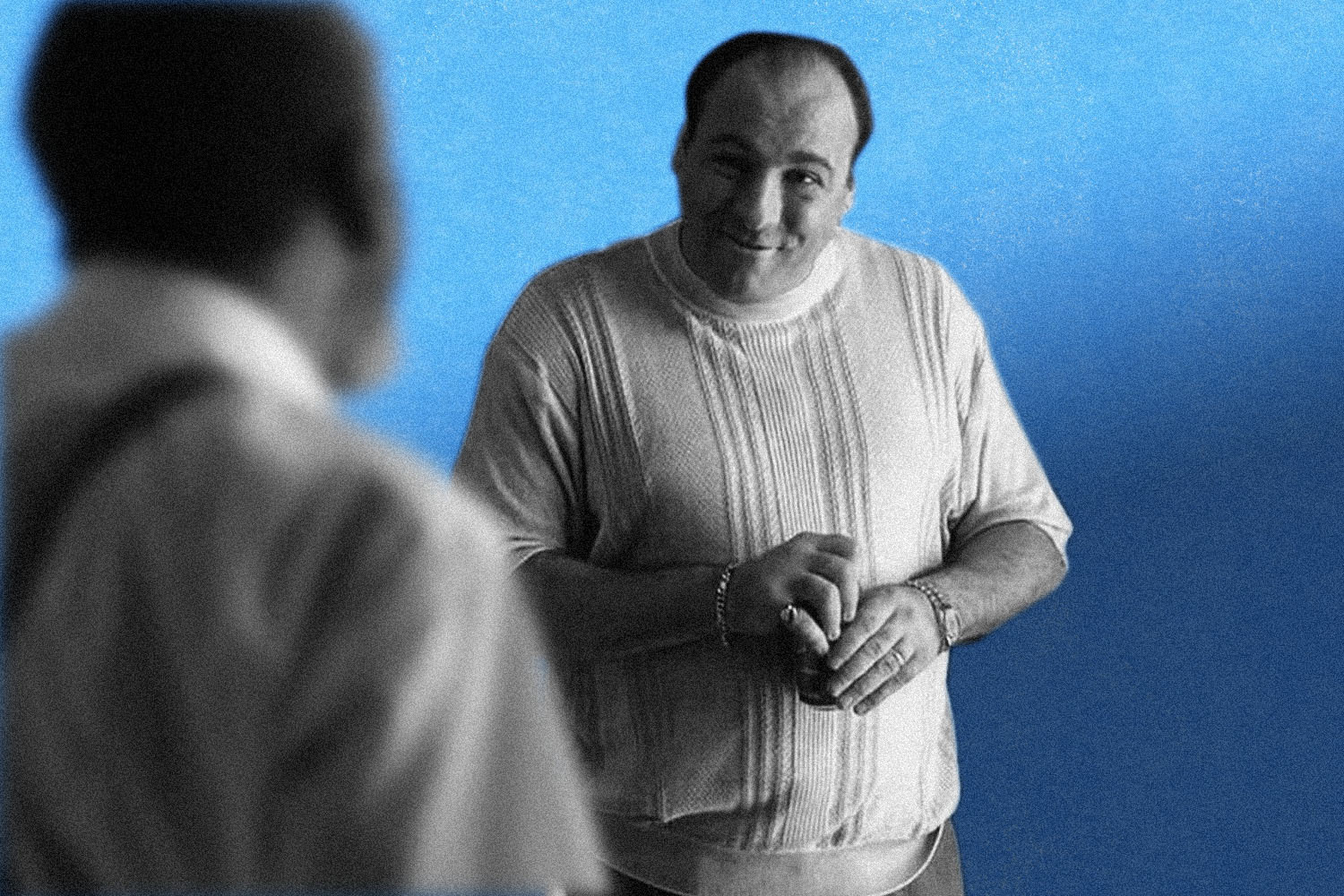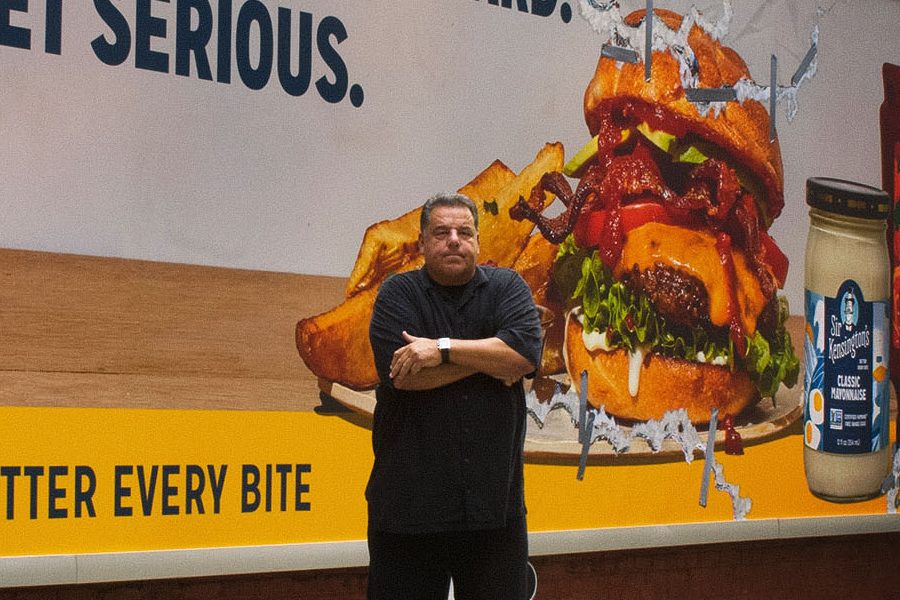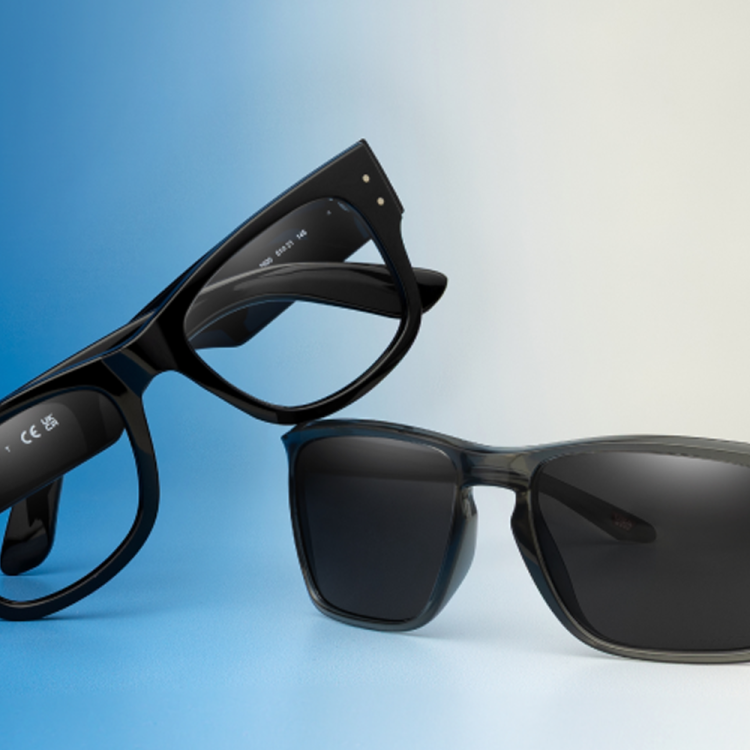The much anticipated prequel to The Sopranos hit theaters and HBO Max this month, and as a voracious fan of the show and menswear aficionado, I obviously had my eyes set on the costume design. The hallmark of The Sopranos has always been its authenticity; as an Italian myself, I recognize immediately when a mob movie or show is costumed in a way that caricatures the culture, rather than represents it, and Tony and co. rank among the most realistic depictions of Italian-American style and culture I know.
So my hopes for The Many Saints of Newark were high.
Minutes into the film, I knew I wasn’t going to be disappointed. Like its predecessor, Many Saints is as much an experience as it is entertainment, putting you right at the heart of this Italian family of mobsters, mothers, wives and children. From the suits to the knitwear, the menswear in the film feels authentic both in its glamour and its grit, accurately illustrating the way in which Italians take pride in the way they look no matter how much money they have in the bank (or in their tubs of birdseed).
I had the opportunity to chat with costume designer Amy Wescott about dressing the men of Many Saints, how she kept continuity with existing characters and created new ones, how many suits it took to shoot that beach scene, and James Gandolfini’s gold chain.
InsideHook: Let’s talk about how you rolled the clock back on so many iconic characters like Junior and Tony.
Amy Wescott: It’s so difficult because it’s very subjective how people change over the years. But I did try to take elements of their personality, and colors, and things like that. Each one of them had a color palette and that was what kept to them. And also kept them in line with their character. So, I watched over all the shows and pulled out colors that I thought could translate into their past, so that it would be a little bit quicker [to recognize them]. And it was also what kind of things made them who they were on the show, whether it be just sweater choices or tie choices.
But then with Tony, he’s so much younger. And you really have to see the arc there. And David Chase was very clear about not making him at all mobster-y. He was a kid. And even though he had these tendencies to be sort of rebellious, he was not a rebel yet, and he was still playing football and being a kid, for the most part. A rebellious kid, but he was still … he wasn’t to that point. So when I pitched ideas to [Chase] early on, he was very clear in not wanting certain things, like no leather jacket on him and things like that. No shadows yet of who he would become.
And he wore a lot of softer fabrics, which communicated that: knits, shearling and textures like tha. There was no harshness to anything he wore.
Because he’s still sort of sweet. And you have to see that. You still have to empathize with him. I mean, even though you did on the show. You empathized with Jim [James Gandolfini] as Tony, you had to see that soft side as he grew. So, I think it was important to have that. And it subtly kept him youthful with stripes and flares and things where he was just fitting in with kids his age, and not Tony, the mob boss.
The one thing that he did was wear his gold chain that Tony wore on the show. And it was the actual chain that Jim wore on the show.
Oh my god.
Yeah, that he gave to Michael [Gandolfini], and he broke it. Michael asked if he could wear it, and if we could fix it. And I thought that was one of the most grounding elements to see where he goes, to arc his character, is just that little piece of who his character becomes on the show.
I love that too because, I feel like the one hallmark of that kind of man is no matter how much money they make, they take pride in the way they look: gold jewelry, perfectly tailored suits.
I think that’s really important. And a great observation. I mean, they dress much more expensively than they live. And they have nice clothes and nice cars a lot of the time. And it was because they’re representing. It’s a nice watch and a nice ring, but they live in a regular house and their wives dressed fairly, not extravagantly. And that was a conscious choice. We just wanted to keep them really, really grounded because this was a world that existed. It’s not some sort of fantasy. People know the next-door neighbor or whatever in Newark who was like this. And really this flash existence probably happened later, maybe in the ’80s, but we weren’t doing that.
Their heroes were Dean Martin, Frank Sinatra and the Rat Pack. And they emulated them, even going into the ’60s and ’70s, when that stuff wasn’t fashionable anymore. Sharkskin suits and things like that, they went away fashion-wise. But these guys kept that, I think, well into the ’80s. Actually, probably even now.
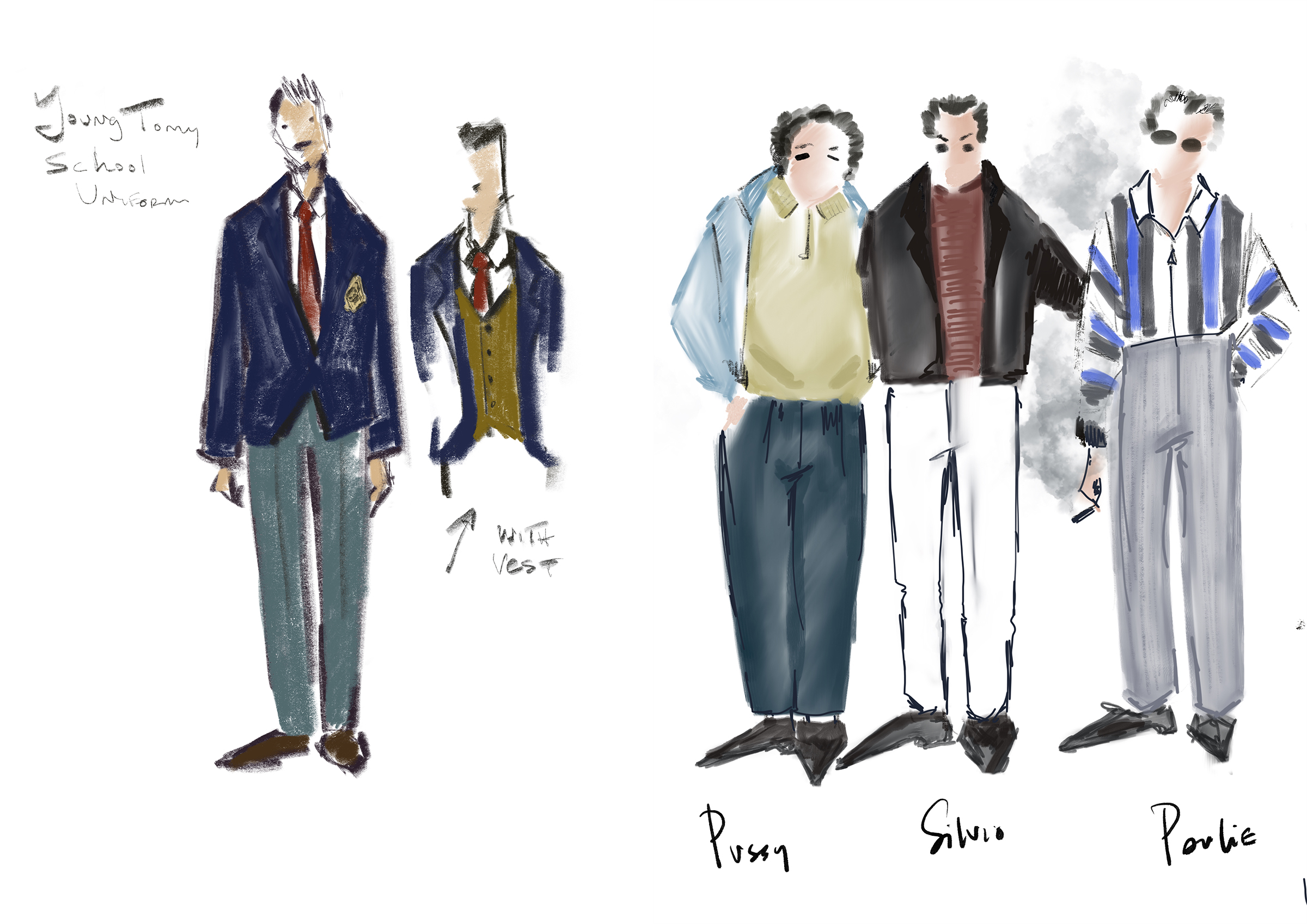
I think for me as an Italian what makes the costuming in this film so enjoyable too is that it feels authentic. There’s no caricature-ish nature to it.
Yeah, I think that sometimes people sort of glamorize that a bit. And I think that wasn’t what our movie was about. It was more the realistic side of who these people were. Yeah, they wore their money, but they were still somebody’s neighbor and parents and business owners. So everything costume-wise I had to really ground in reality.
And that was all through research, and finding out what was real and what people did wear. And a lot of times, that was going to Newark. And I think, through the brain of David also, you can dig, and find research, and find what the truth was there.
So speaking of authentic Italian menswear, I want to talk about the knitwear. The gangster knit, as I call it. Every Italian man I know owns some iteration of it.
Some we actually made custom, because the problem is, a lot of times when you find these knitwear pieces in the costume houses, and things like that, they’re falling apart. And they’re moth-eaten. The idea is there — you see what it was — but it’s too old to represent a new shirt, sadly. So a lot of the knitwear we had we made. We found a wonderful knitter in New Jersey. And it was awesome, just reimagining them. Staying really close to what the actual shape was, because we had those. We had the ’50s and ’60s versions, but they were just too beat. But then for some of the kids and things like that, we hunted around. And a lot of times, you can find those styles still out there. It’s a matter of digging and finding them.
But they have really great sources still if you’re in New Jersey, or if you’re in Queens. There are some places that we dug around and found some decent things out there.
Because these men are still out there!
Yes, yeah, nothing’s changed.
Were the suits similarly bespoke?
All of Dickie’s suits, I think, with the exception of one, were bespoke suits that we had made. Custom-made suits from Giliberto’s, which is this amazing custom suit maker in Manhattan. And the owner Anthony Giliberto and I worked very closely to just get the fit 100% on Alessandro [Nivola]. And Alessandro would come to the shop with us for several fittings. I mean, we just worked really hard on just getting the fit so perfect on him because it had to look like a custom-made suit. That’s where he put his money, so we couldn’t skimp on that. And he wore so many suits, I can’t even tell you. I mean, his rack of suits was beautiful. It was this amazing array. At the end, he was like, “Oh my God, I’m going to miss my suits. I wish I could take them all home.”
His shirts as well. We had all his shirts made by Carl Goldberg, who owns a great custom shirt company called CEGO. I think most of our shirts were made by him, because it’s really important to get the right neck. And a lot of the shirts now, they have a spread collar, or the collar is too small or too wide. And we just had to really get the collars right on it.
Same with the knit shirts. You can find the things out in the invented shops, or in costume houses, rental houses. But they’re not in good shape anymore. You could see little tiny holes and things like that. And that would’ve really given it away. I mean, who wants to see Dickie Moltisanti in a hole-y suit? I can’t.
Let’s talk a little about dressing Dickie Moltisanti, because there was no point of reference from The Sopranos but obviously his presence loomed large.
We had complete carte blanche, which was really nice. We could almost make him into a bit of a fantasy character in a way. He is this guy who’s so charming and so likable, yet really complex. And he has strictly two sides to him. And we had to work on the veneer, the outside layer that everybody sees. And he worked really hard to make sure his outward appearance was this very important money guy, very high on the ladder.
I think, with him, a lot of it was staying lighter with the colors. The colors got darker as we went along, because his character got darker and his brain got darker. But in the beginning, it was very happy-go-lucky. That’s his whole attitude and demeanor. But always the bit of shine and the pocket square. And everything was always very together with him. So keeping him really looking good all the time. And I think that was really fun for both of us. Alessandro and I had a great time with that character because of it — being able to do something completely new.
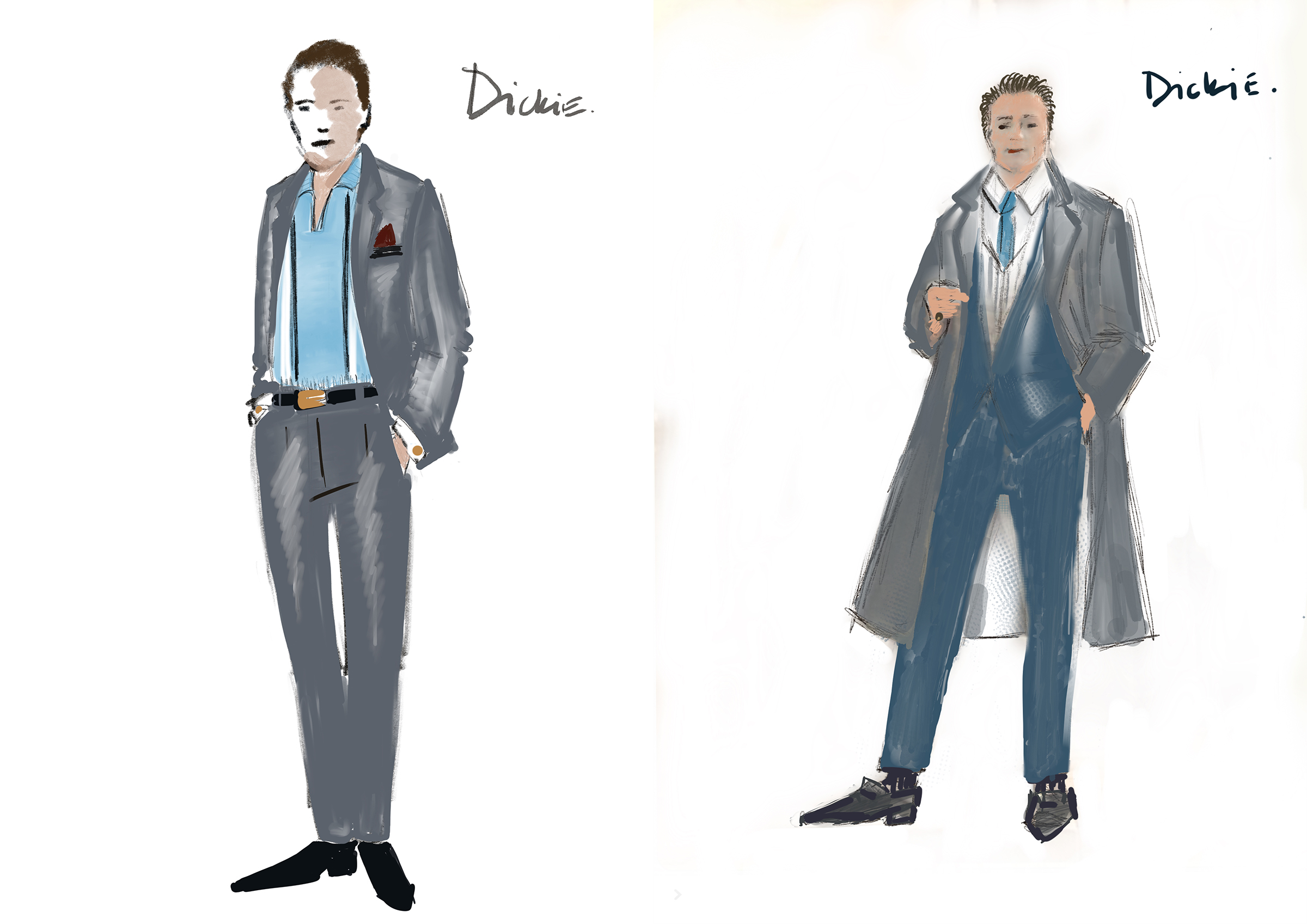
And of course the whole cast must have been incredible to work with and dress, like Ray Liotta.
[SPOILER FORTHCOMING] The cast was so stellar and awesome. I mean, I loved all those actors. It was a really a collaborative effort for us both to get on the same page and agree on how to pay homage to the character, but not in a caricature-y way.
Anthony made all of [Ray’s] suits as well. And of course, when he’s in the car getting killed, we had, I don’t know, I want to say 12 of his whole outfit, because we had to make … it was an insane amount because, of course, he gets killed in the car. And then he drags his body. And then he sets him on fire. So, it’s all the clothes. He had to go through so much that we had to have so, so many.
Oh wow, you never even consider that sort of thing watching it.
It’s so much more than what people think when they see it. Things have to evolve in a certain way. But because shooting takes so long, it’s very frequently more than just one thing anyway. Like with the beach scene, Dickie … I mean, geeze. I think he had 10 suits. That overcoat was a custom-made overcoat. And we had, I think, five or six of them because it just got completely soaked. And it was such a great jacket that I was crushed every time it got completely soaked with salt water. I was like, “Oh bye-bye, jacket.”
So my last question is: Do you think there’s anything the modern guy can learn from the style of the men in The Many Saints of Newark?
Absolutely. And I would say that the cut on a ’50s and ’60s suit, that’s the more tapered — and I don’t mean fitted, just tapered and a thin lapel — always looks classic. And I think it’s a beautiful look on most men. A nice flat-front pant. It’s a timeless look with a white shirt that I think men always look really, really good in a one- or two-button thin lapel. A well-fitted suit goes a long way.
The quarter break is perfect. I wish people would stop going so much further than that. And I also think that tailoring is everything. So you could get a cheaper suit and just have it tailored, and it will look great.
Tailoring is the bottom line.
This article appeared in an InsideHook newsletter. Sign up for free to get more on travel, wellness, style, drinking, and culture.
